 W
WAdinotherium is an extinct genus of Toxodontidae, large bodied hoofed ungulates which inhabited South America during the Middle to Late Miocene, from 17.5—6.8 Ma and existed for approximately 10.7 million years , Santacrucian to Huayquerian in the South American land mammal ages (SALMA). Fossils of Adinotherium have been found in the Santa Cruz and Ituzaingó Formations of Argentina and the Chucal and Río Frías Formations of Chile.
 W
WBorhyaena is an extinct genus of South American metatherian, living between 17.5 and 15.5 million years ago in Patagonia, Argentina and Chile.
 W
WCladosictis is an extinct genus of South American metatherian from Patagonia, Argentina and Chile.
 W
WDiadiaphorus is an extinct genus of litoptern mammal from the Miocene of Argentina and Bolivia, South America.
 W
WEocardia is an extinct genus of rodent from the Early to Middle Miocene of Argentina and Chile, South America. The 30 centimetres (12 in) long creature was related to guinea pigs and the capybara.
 W
WEryops meaning "drawn-out face" because most of its skull was in front of its eyes is a genus of extinct, amphibious temnospondyls. It contains the single species Eryops megacephalus, the fossils of which are found mainly in early Permian rocks of the Texas Red Beds, located in Archer County, Texas. Fossils have also been found in late Carboniferous period rocks from New Mexico. Several complete skeletons of Eryops have been found in lower Permian rocks, but skull bones and teeth are its most common fossils.
 W
WEuowenia is an extinct genus of Diprotodontia which existed from the Pliocene to the upper Pleistocene. Weighing around 500 kg, Euowenia is only known from three locations on mainland Australia, Chinchilla in Queensland, Menindee in New South Wales and the Tirari formation on the Warburton River in the Lake Eyre basin.
 W
WHapalops is an extinct genus of ground sloth from the Early to Late Miocene of Brazil, Bolivia, Colombia, and Argentina in South America.
 W
WHegetotherium is an extinct genus of mammals from the Middle Miocene of Argentina and Chile, South America.
 W
WHemipneustes is an extinct genus of sea urchins belonging to the family Holasteridae.
 W
WInteratherium is an extinct genus of Interatheriidae from the Early to Middle Miocene (Santacrucian-Mayoan). Fossils have been found in the Santa Cruz, Collón Curá and Sarmiento Formations in Argentina.
 W
WIsotemnidae is an extinct family of notoungulate mammals known from the Paleocene to Middle Miocene of South America.
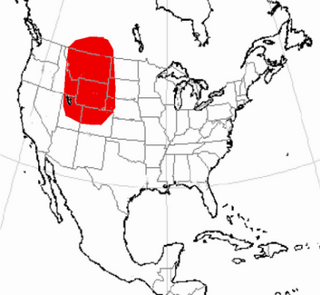 W
WLeptotragulus is an extinct genus of protoceratid, endemic to North America. It lived during the Middle Eocene epoch 40.2—33.9 Ma, existing for approximately 6 million years .
 W
WMammites is a Late Cretaceous ammonite genus included in the acanthoceratoidean family, Acanthoceratidae, and the type genus for the subfamily Mammitinae. Mammites was named by Laube and Bruder in 1887.
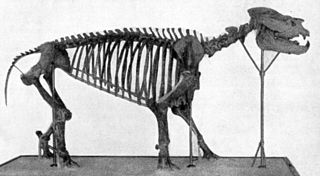 W
WMetamynodon is an extinct genus of amynodont rhino that lived in North America and Asia from the late Eocene until early Oligocene, although the questionable inclusion of M. mckinneyi could extend their range to the Middle Eocene. The various species were large, displaying a suit of semiaquatic adaptations similar to those of the modern hippopotamus despite their closer affinities with rhinoceroses.
 W
WNematherium is an extinct genus of ground sloth of the family Scelidotheriidae, endemic to Argentina and Chile, South America during the Middle Miocene epoch (Santacrucian). Fossils have been found in the Cura-Mallín Formation of Chile and the Santa Cruz and Sarmiento Formations of Argentina.
 W
WOrnithodesmus is a genus of small, dromaeosaurid dinosaur from the Isle of Wight in England, dating to about 125 million years ago. The name was originally assigned to a bird-like sacrum, initially believed to come from a bird and subsequently identified as a pterosaur. More complete pterosaur remains were later assigned to Ornithodesmus, until recently a detailed analysis determined that the original specimen in fact came from a small theropod, specifically a dromaeosaur. All pterosaurian material previously assigned to this genus has been renamed Istiodactylus.
 W
WPaurodon is an extinct genus of Late Jurassic mammal from the Morrison Formation of the western US.
 W
WPeltephilus, the horned armadillo, is an extinct genus of dog-sized, armadillo xenarthran mammals which first inhabited Argentina during the Oligocene epoch, and became extinct in the Miocene epoch. Notably, the scutes on its head were so developed that they formed horns. Aside from the horned gophers of North America, it is the only known fossorial horned mammal.
 W
WPhorusrhacos is an extinct genus of giant flightless terror birds that inhabited Argentina during the Miocene epoch. Phorusrhacos was one of the dominant land predators in South America at the time it existed. It is thought to have lived in woodlands and grasslands.
 W
WProganochelys is an extinct, primitive stem-turtle that has been hypothesized to be the sister taxon to all other turtles creating a monophyletic group, the Casichelydia. Proganochelys was named by Georg Baur in 1887 as the oldest turtle in existence at the time. The name Proganochelys comes from the Greek word ganos meaning brightness, combined with prefix pro, and Greek base chelys meaning "turtle". Proganochelys is believed to have been around 1 meter in size and herbivorous in nature. Proganochelys was known as the most primitive stem-turtle for over a century, until the novel discovery of Odontochelys in 2008. Odontochelys and Proganochelys share unique primitive features that are not found in Casichelydia, such as teeth on the pterygoid and vomer and a plate-like coracoid.
 W
WPromegatherium is a genus of prehistoric xenarthrans that lived in Argentina, during the Late Miocene. This genus is regarded as closely related to the later, and more famous genus, Megatherium, hence the reference in the name. The first specimens of Promegatherium were originally described by the biologist Florentino Ameghino in 1887. Its known species are Promegatherium cabreri, P. nanum, P. parvulum, P. remulsum, and P. smaltatus. P. nanum was originally placed in the genus "Eomegatherium" before it was grouped together in Promegatherium.
 W
WPropalaehoplophorus, also written as Propalaeohoplophorus, is an extinct genus of glyptodont, which lived in South America during the Early Miocene epoch.
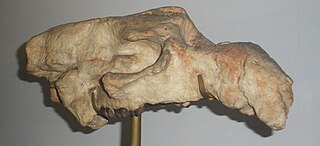 W
WPrototherium is a genus of extinct sirenian related to the dugong. It is known from middle (Bartonian) and upper Eocene deposits in Italy and Spain. Type species is P. veronenses
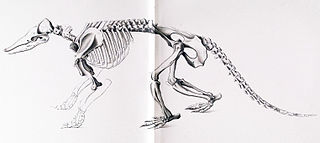 W
WStegotherium is an extinct genus of armadillo in the family Dasypodidae from Early Miocene Argentina.
 W
WTheosodon is an extinct genus of litoptern mammal from the Early to Middle Miocene of South America.
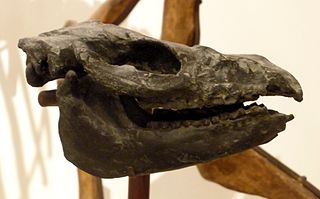 W
WThoatherium is an extinct genus of litoptern mammals from the Early Miocene of Argentina. Fossils of the genus have been found in the Santa Cruz Formation in Argentina.
 W
WTrigodon is an extinct genus of the family Toxodontidae, a large bodied notoungulate which inhabited South America during the Late Miocene to Early Pliocene, living from 11.61—4.0 Ma and existed for approximately 7.61 million years . The type species is T. gaudryi.
 W
WXotodon is an extinct genus of toxodontid mammal that lived during the Late Miocene in Argentina, South America. Fossils of Xotodon have been found in the Ituzaingó, Maimará and Chiquimil Formations of Argentina.